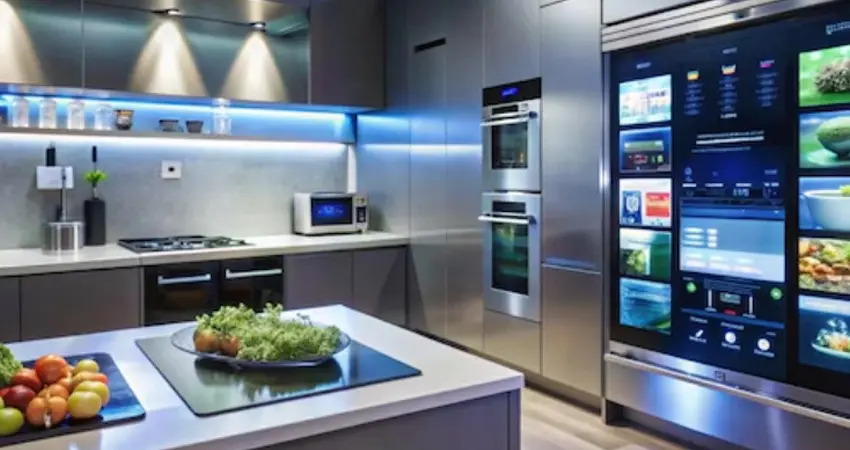
Running a restaurant today feels like juggling fire. Labor shortages hit hard, food costs climb, and customers want quick service. You need ways to stay ahead. Smart kitchen technology steps in here. It uses connected devices and data to make operations smoother. Think Internet of Things (IoT) linking your gear, automation handling routine jobs, and remote monitoring keeping watch from afar. This shift from old-school methods to smart systems cuts waste and boosts profits. Restaurant automation isn't just a trend—it's your edge in food service.
IoT forms the backbone of modern kitchens. Devices talk to each other and send data to the cloud. This setup lets you spot issues before they grow.
Smart ovens and fryers now send real-time stats on temperature and runtime. Refrigerators report door opens and internal chills. This flow of info predicts breakdowns. For instance, a sensor might flag a worn motor in your grill before it quits. Downtime costs you money—lost sales and rushed fixes. With IoT in food service, you get alerts via app, so repairs happen on your schedule.
One tip: Tag all big equipment with sensors linked to a main hub. This tracks everything in one spot. Chains like fast-food spots use this to keep lines moving.
Gone are the days of guessing stock levels. Smart scales weigh ingredients as you use them. RFID tags on packages log entries and exits. Environmental sensors check humidity and temp to track shelf life. You see exactly what's low or spoiling. Manual counts waste time and lead to errors. IoT inventory tracking changes that—real-time views mean less overbuying.
Food waste drops by up to 30%, per industry reports. You order just enough, saving cash. Small cafes adopt these for tight budgets.
Connected appliances show exact power draws. Ovens log idle times; fridges report cycle efficiency. You spot peak hours and tweak schedules. Turn off extras during slow shifts. This cuts bills without skimping on quality.
Studies from energy groups say smart setups save 20-25% on utilities. It's good for the planet too—less waste heat means lower carbon footprints. Your restaurant looks green to eco-minded diners.
Automation takes the grunt work off your staff. Robots and software handle repeats, so humans focus on creativity. Efficiency jumps, and errors fall.
Robotic arms flip burgers or slice veggies with precision. Batch cookers prep sauces in bulk without watching. Initial costs seem high, but labor savings add up fast. A burger chain might spend $50,000 on a robot, but it pays back in a year through fewer hires.
Take Chipotle—they test robots for guac mixing. Speed doubles, and portions stay consistent. You get fresh food without tired hands.
Point-of-sale systems now feed straight to kitchen displays. Orders pop up with prep times. IoT data sorts them—hot items first for quick turns. No more yelling across the line.
KDS automation ties it all. You prioritize based on table waits or cook needs. This integrated kitchen workflow cuts ticket times by 15-20%. Staff stress drops, service shines.
Autonomous bots roll plates from kitchen to table. They bus dirty dishes too. Front staff gets free for greetings and upsells.
In busy spots, these cut delivery errors. A hotel chain uses them to weave through crowds safely. You free up bodies for peak rushes.
You don't need to be on-site 24/7. Cloud tools let you check in from your phone. This command center keeps ops tight across sites.
Dashboards pull data from HVAC, fridges, and lines. See temps, stocks, and flows at a glance. Multi-location owners oversee branches from home.
One key: Lock down access with strong security. Firewalls and logins stop hacks. You sleep better knowing it's safe.
Fridges auto-log temps every minute. Holding warmers do the same. Alerts buzz if things dip—fix before spoilage hits.
This digital trail beats paper logs for inspections. No fudged numbers. As a food safety expert notes, "Constant records catch risks early, saving recalls." Compliance stays solid.
Techs peek at your gear online. A fridge glitch? They see error codes and guide fixes. No wait for on-site visits.
Repairs speed up—hours, not days. Manufacturers like Hobart offer this for their ovens. You stay open longer.
Data isn't just numbers—it's your roadmap to better choices. Analytics from IoT turn raw info into smart moves. Profits follow.
Compare sites side by side. One store wastes more oil? Dig in. Throughput varies by shift? Adjust.
Multi-unit ops use this for fair staffing. You spot winners and fix laggers quick.
Real cook times replace guesses. A steak takes 12 minutes? Factor that in costs and staff plans.
Restaurant data analytics reveal hits. Drop slow sellers. Profits per plate rise 10-15%.
Systems crunch past sales, events, and weather. Rainy day? Cut salad prep. Game night? Stock up wings.
Auto-adjust pars for shifts. Waste shrinks, readiness grows. You nail every rush.
Smart kitchen technology pays off big. Waste drops, labor needs ease, rules stay met, and service speeds up. It's not optional anymore—it's how you compete.
Key steps to start:
Dive in now. Your bottom line will thank you.